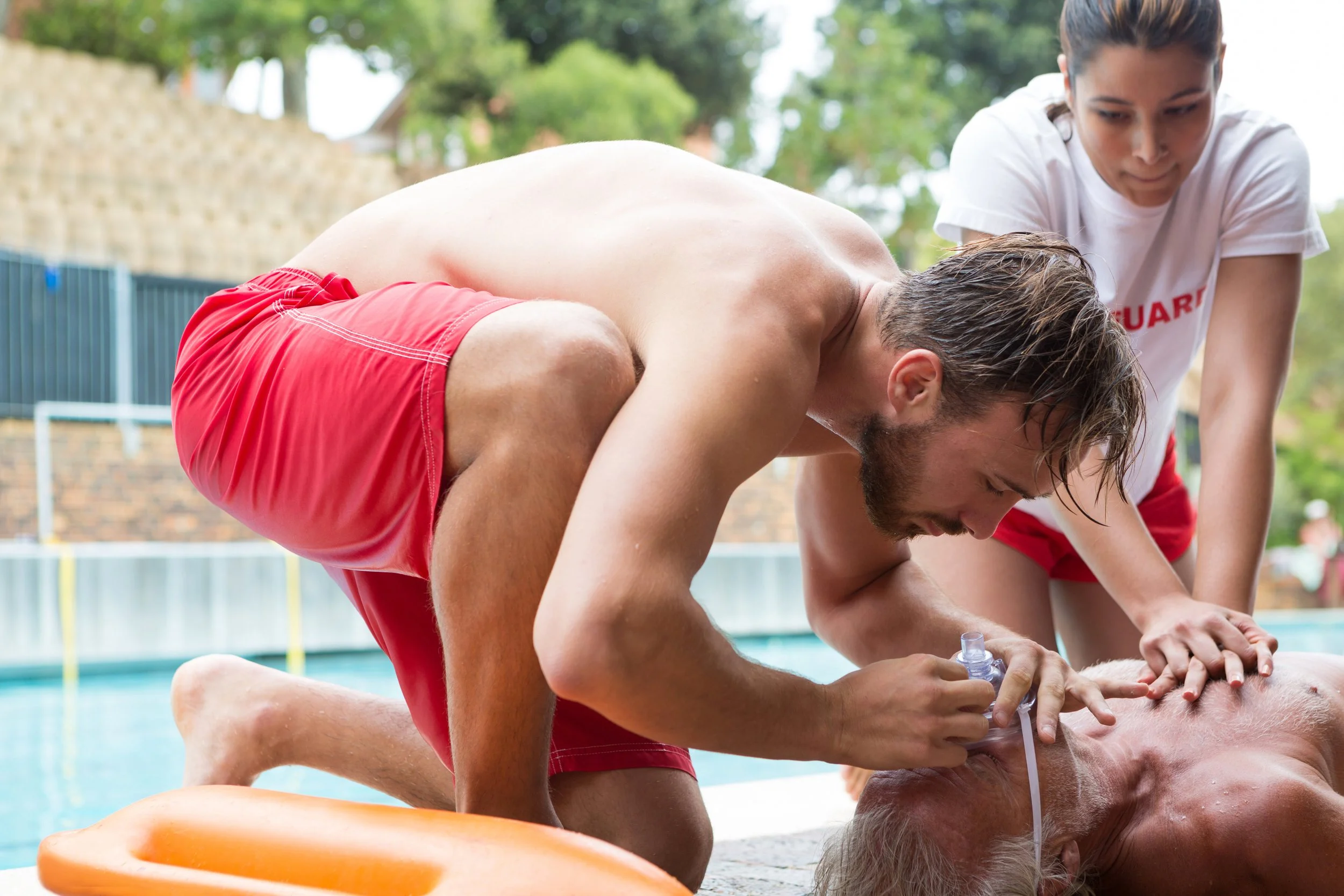CPR for Lifeguards: What Makes Lifeguard Training Unique
Lifeguard perfoming CPR on a swimmer
When emergencies happen in the water, every second counts. Unlike most CPR scenarios that occur in homes, gyms, or hospitals, lifeguards often respond in environments with unique challenges—fast-moving water, crowds, and victims who may be unconscious or injured from diving. That’s why CPR training for lifeguards is designed to go beyond the basics, preparing them for real-world aquatic rescues.
TL;DR
Teachers, coaches, and parents are often the first responders in emergencies involving children. CPR training empowers them to act quickly and confidently. Most will take Heartsaver CPR/AED, while some in specialized or medical roles may need BLS or even PALS. Certification boosts compliance, safety, and trust in schools, sports programs, and families.
Why Lifeguards Need Specialized CPR Training
According to the Centers for Disease Control and Prevention (CDC), drowning is the leading cause of unintentional injury death for children ages 1–4 in the U.S. Lifeguards are often the first line of defense in these emergencies.
Unlike most CPR providers, lifeguards must:
Recognize and respond to drowning-related cardiac arrest
Provide rescue breaths immediately (ventilations are especially critical in drowning scenarios, per AHA Guidelines
Perform CPR on victims with airway complications (water inhalation, aspiration)
Coordinate with multiple rescuers while managing bystanders and water hazards
This makes their training unique compared to traditional CPR certification.
Skills Taught in Lifeguard-Specific CPR Courses
While core techniques are based on AHA Heartsaver and BLS standards, lifeguard CPR training emphasizes:
Rescue breathing in water emergencies (ventilations before compressions)
Use of rescue equipment such as pocket masks, bag-valve masks, and oxygen units
Team response drills with multiple rescuers rotating compressions
Rapid AED use while ensuring water safety and dry conditions
Integration with rescue techniques, including spinal precautions
CPR Certification Options for Lifeguards
Lifeguards may pursue different levels of CPR training depending on their role:
BLS – Basic Life Support: For lifeguards employed by hospitals, universities, or EMS-linked facilities.
Heartsaver CPR/AED: Covers adult, child, and infant CPR, AED use, and First Aid—ideal for most pool and beach lifeguards.
Onsite CPR Training: Pools, recreation centers, and waterparks can schedule group training sessions for entire staff teams.
For individuals, see all CPR & First Aid Courses.
Real-World Impact of Lifeguard CPR
Quick recognition and response from trained lifeguards saves lives every year. Studies show that survival rates are significantly higher when CPR is initiated immediately at the scene, especially in drowning cases where ventilations are key【NIH – Drowning Resuscitation Review†https://www.ncbi.nlm.nih.gov/pmc/articles/PMC9104454/】.
By combining water rescue skills with CPR certification, lifeguards provide a critical bridge between accident and advanced medical care.
Final Thoughts
Lifeguards face emergencies unlike any other responders. Their CPR training goes beyond the classroom, preparing them for drowning scenarios, teamwork under pressure, and specialized equipment use. Whether you’re a lifeguard renewing your card or a facility manager preparing staff for the season, Gear Up with CPR makes it simple to get certified and stay ready.
👉 Explore Heartsaver CPR & AED or Onsite Training Options to keep your team prepared year-round.


